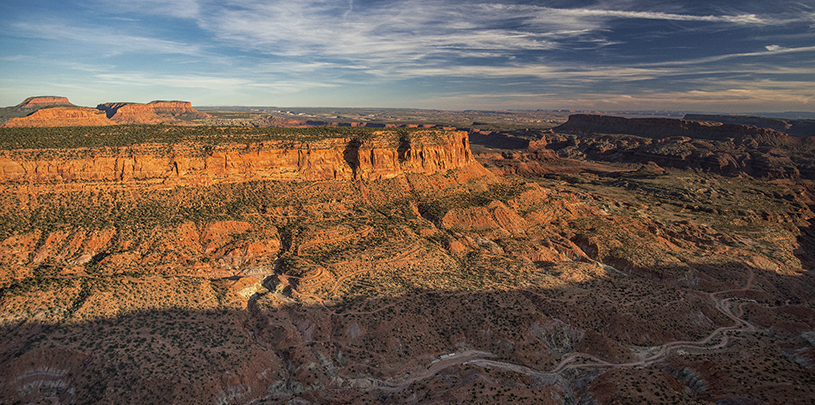 by Roger Clark, Grand Canyon Director
by Roger Clark, Grand Canyon Director
On November 14, eight members of the Save the Confluence coalition joined Hopi Chairman Herman Honanie and cultural preservation director Leigh Kuwanwisiwma in asking Havasupai Chairman Rex Tilousi and the Havasupai Tribal Council to pass a resolution to oppose a mega-resort and tourist tramway at the Confluence of the Little Colorado and Colorado rivers. This rare intertribal gathering took place at the Havasupai tribal office in Supai Village, located in the heart of Grand Canyon and along the healing turquoise waters of Havasu Creek.
Chairman Tilousi promised swift action on the request, sharing Havasupai names for places within the canyon and surrounding lands, including the Confluence, which are significant to Navajo, Hopi, Zuni, and many other native people of the region. Indigenous cultures consider the entire Grand Canyon to be sacred and sacrosanct for sustaining pre-colonial religious practices.
In 2012, the Hopi Tribal Council passed a resolution that the “commercial initiative called ‘Grand Canyon Escalade.’” According to the resolution, the proposed development would “forever adversely impact Hopi sacred places to which Hopis have aboriginal title and use.” Furthermore, the development “will forever compromise the tranquility and sacredness of all surrounding area including the final resting place of Hopi people, Öngtupqa [the Grand Canyon]; thereby violating our First Amendment rights.” The Hopi resolution also calls on other tribes and organizations to oppose desecration by Grand Canyon Escalade, which would ferry thousands of tourists a day from the east rim of the Grand Canyon to a platform at river level. The entire development would be built within an area held sacred by native people since time immemorial.
In response, the Zuni Tribal Council and the All Pueblo Council of New Mexico passed similar resolutions in 2014. The Zuni resolution says the tribe has “… sacred sites, shrines and Tribal Cultural Properties within and around the Grand Canyon that have Religious, cultural and traditional significance to the Zuni way of life….Zuni People have a cultural, Traditional and Religious relationship and connection to its ancestral and aboriginal past and of most significance the place of origin of the Ashiwi [within Grand Canyon], including ancestral sites, sacred sites, shrines, springs, rivers, lakes, ancestral burials, petro glyphs, places of significant events, and all life including aquatic, mammal, animal, plants and all birds…”
The recent meeting in Supai further united intertribal opposition to desecration by Scottsdale-based developers who hope to profit by transporting up to 10,000 tourists a day into one of the most remote and culturally important areas of the Southwest. The Havasupai Tribal Council has drafted a resolution and is expected to pass it before the end of the year.




